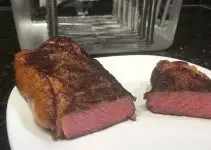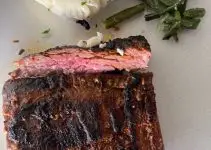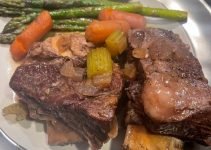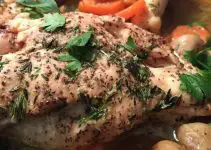Smoked meats are cooked over low, indirect heat for long periods of time, and is a process that has been perfected by many great cooks over the years. While sous vide cooking is much newer, the generally concept is similar. But, what if you put the two together? Pairing sous vide cooking with smoking can produce the most tender, flavorful, perfectly cooked smoked meats.
The history and art of smoking meats
Smoking meat is a way to preserve meats, fish, cheeses, and other food items. It’s a technique that has been around for thousands of years, and is still an important tradition in many culinary regions around the world. Smoked fish, jerky, hams, and sausages are commonly found in both specialty shops and large-scale markets around the world. The heat from burning wood or charcoal helps to dry the food, while exposure to their compounds released during burning helps to preserve the proteins.1 This helps to prevent spoilage, improve flavor, and extend shelf life. One of the biggest benefits to smoked foods is that they are able to be preserved without adding actual preservatives. Preservatives like nitrates, nitrites, benzoates, and different acids have been linked to migraines, allergies, and even some forms of cancer (although more research is likely needed).2
There are three basic methods used to smoke foods; cold smoking, hot smoking, and smoke roasting. Cold smoking is done at a much lower temperature (max temperature of about 115 degrees Fahrenheit), and adds flavor without actually cooking the food. Bacon, salami, and ham are all examples of cold smoked meats.
Hot smoking is done at temperatures ranging from 140-185 degrees Fahrenheit, which both cooks the food and adds flavor. However, the higher temperature can lead to excess loss of moisture if the food is cooked for too long; this is ideal for preserving meats, but not ideal for something that is meant to be eaten immediately, like pulled pork or a beef brisket.
Smoke roasting is a combination of smoking and roasting meats, and occurs at temperatures higher than 185 degrees Fahrenheit. This can be done in a conventional oven, and can be an alternative way to impart a smoke flavor into meats for those who don’t have a smoker or charcoal grill.
Sous vide and smoking
So, how do these two align? And how can they be combined for the perfect brisket or pulled pork? Pork has a lot of fat and connective tissue, which means that it is less likely to dry out during cooking, while brisket does not. Brisket is a tough, lean piece of meat, but if you’ve ever been to Texas, you’ll quickly learn that they appreciate this cut of meat, and produce some of the best smoked brisket in the country. But, is there such a thing as sous vide barbecue brisket? Yep!
Let’s be clear; combining the two is not true barbecue, because the heat from the wood chips/charcoal is not what’s breaking down the connective tissue in meat. Rather, the meat is cooked sous vide (in a bag, submerged in water, for an extended period of time, maintained at a specific temperature). BUT; sous vide barbecue is convenient. It takes a long time to properly smoke a brisket; all day or even overnight. Sous vide cooking is a way to set it and forget it; the only thing you’ll need to do is occasionally check to make sure too much water hasn’t evaporated from the cooking vessel (here is a great article about helping to prevent water from evaporating during cooking). Time and temperature varies, depending on preference.
A couple helpful tips to make a great sous vide brisket;
- Adding a tiny bit of liquid smoke to the meat prior to sous vide cooking gives it a mild smoky flavor that it would normally get on the grill. Smoked salt is another option.
- Smoking the meat for a couple of hours prior to sous vide cooking is ideal; some chefs believe that raw meat absorbs smoke flavor better.
- And what’s the big deal about the smoke ring? The pink ring around the outside of the food? Well…I’ve got news for you. It’s purely a chemical reaction between the carbon monoxide and nitric oxide from the smoke and myoglobin in meat.3 BUT, if you want to recreate that ring without smoking, you can use pink curing salt. Neat, huh?
- Once your brisket is perfectly sous vide cooked, make sure it’s really dry; moisture on the outside of the meat is not ideal; the juices left in the bag can be reserved for an umami-rich sauce.
- Finish the brisket over wood or charcoal for a couple of hours, or until it’s got a dark, rich, crackly coating (“bark”). Alternatively, it can be finished in the oven if you don’t have a smoker.
Smoking and sous vide are both done over low heat for long periods of time. They can be combined to make some of the best brisket (or any other smoked item) with less hands-on work than just smoking.
Contributor:
This article was written by Stephanie Searor, MS RD LDN
Reference:







Great post thanks for share.Smoked fish, jerky, hams, and sausages are commonly found in both specialty shops and large-scale markets around the world. David Brown famous for delicious smoker recipes, expert cooking methods, cooking tips, and tricks as well as for his cooking recipes.